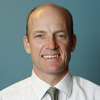The below question is answered by Dr. James Craigie of The Center for Natural Breast Reconstruction.
After my stage one DIEP surgery, I have some lumpy areas that I am told are fat necrosis. Do they go away or what can you do about them? I am due to have stage two of my surgery soon.
Fat necrosis is a generalized term that results following injury or surgery when fat no longer has an adequate blood supply to survive. When fat does not survive and is in the breast the body develops scar or firmness as part of the healing process. A small amount of fat necrosis may go away on its own and larger amounts may persist indefinitely making the breast feel hard.
Following a DIEP or other muscle sparing breast reconstruction some of the fat transferred to the breast may not receive enough blood supply to survive the healing process. When this happens you may feel small lumps in the new breast about 1 – 2 months after the first surgery, sometimes sooner depending on where the lump is. These are usually small areas that can be removed at the second stage without affecting the end result. This is the most common situation we encounter.
On a larger scale, if something has occurred during the course of surgery and the tissue was transferred with an inadequate blood supply, the entire breast or a major portion of it could develop into fat necrosis. This is the most severe situation and would be considered a major complication or even failure of the procedure. Fortunately, in our experience, this situation is rare and the surgeon will know this has happened and should discuss options for correction.
If someone has a new breast lump and has a history of breast cancer, they are likely to undergo biopsies or have some concern over the area. Lumps that are fat necrosis may make breast exams more difficult or confusing and increase the chance that a new cancer or recurrence goes undetected. So anytime there is obvious fat necrosis after the first stage of surgery, we would make attempts to remove it. Initially, when a patient states they feel a firm area, I always remind them that what they feel on the outside will feel larger than the actual amount of fat necrosis tissue because the body is creating a reaction to the tissue trying to dissolve it.
It should be stressed that even patients who have undergone breast reconstruction should continue to do breast self-examinations. Any surgery on the breast will cause swelling and scarring. In many women who undergo reconstruction with breast implants, the body creates a capsule in response to these implants and all of these scars, capsules, or post surgical changes can feel like lumps and bumps following surgery. Therefore, it is important to know that fat necrosis may become apparent soon after surgery and should stay the same and not enlarge as time goes by. Alert your doctor regarding any breast lump that seems to enlarge. It is also important to know that breast exams will not be useful until after stage one and two are completed and the breast has had several months to recover from the surgery.
Once the reconstructive process is complete, things should not be changing. Patients should become familiar with any area that feels firm. If there are scars remaining after surgery, the patient should keep track of where they are and monitor them for changes. Changes in size or significant changes of any type should always be brought to the attention of your physician even in a reconstructed breast.
—James Craigie, M.D.
Follow us on Facebook to see more questions answered by our doctors.







